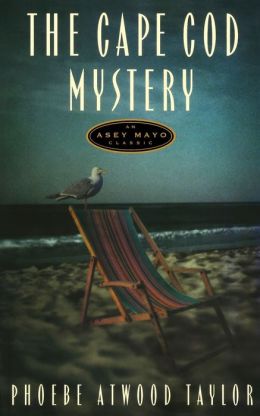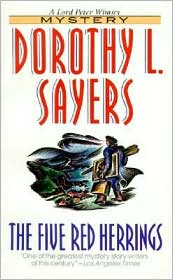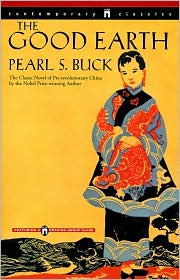The Cape Cod Mystery. Phoebe Atwood Taylor. 1931. Countryman Press. 190 pages.
"'Heat wave hits East,'" Betsey read. "'Prostration record of all time. Mercury soaring.' Well that's gone and torn our peaceful vacation, that has. By tonight we'll have a stack of telegrams a yard high from city-sizzling friends who want to get cooled off." I sighed a little. "I know," I said wearily. As a perennial and thoroughly experienced summer cottager on Cape Cod I sat back to await the inevitable deluge. I really enjoyed Phoebe Atwood Taylor's The Cape Cod Mystery. This is the first Asey Mayo mystery. There are twenty-four in the series spanning twenty years. The Cape Cod Mystery is not narrated by Asey Mayo, in fact, Maso is not introduced until after the body has been discovered and an arrest has been made. It is narrated by Prudence Whitsby; she is a very charming narrator. The novel opens with Prudence and Betsey deciding to invite TWO guests to visit them in their summer cottage. They have received plenty of telegrams already. But. They eventually decide to invite two women who have not asked for an invitation. Betsey selects one guest, Dot, and Prudence selecting the second, Emma. Soon after their arrival, Prudence discovers a dead body. The victim is a writer, Dale Sanborn. He's just recently arrived and rented a cottage, very few people know that "a famous writer" is in their midst. But someone obviously knew where to find him and had reason enough to kill him...
Prudence and Asey Mayo have no idea who the real killer is. But both know beyond a doubt that it isn't the man arrested for the crime, Bill Porter. These two will have to do some detective work. The officials have stopped looking for the murderer since they're sure they've already arrested him... There are plenty of clues, plenty of suspects, plenty of details to try to make a logical narrative of the crime.
I loved so many things about this one! I would definitely recommend this author!
Read The Cape Cod Mystery
- If you love vintage mysteries
- If you enjoy mysteries, American mysteries
© 2013 Becky Laney of
Becky's Book Reviews
This Day in World History - While federal and state officials knew Capone was guilty of bootlegging, running prostitution rings, and ordering these and other murders, they could not get the evidence to convict him. Their break came in May 1929, when Capone was arrested in Philadelphia for carrying a concealed weapon. While he served his prison sentence, federal authorities combed his homes for evidence. Their efforts produced the desired results. In 1931, officials leveled more than 5,000 counts of violating the Prohibition law against Capone and dozens of followers. They also indicted Capone on twenty-two counts of evading income taxes.

The Five Red Herrings. Dorothy L. Sayers. 1931. HarperCollins. 325 pages.
If one lives in Galloway, one either fishes or paints. "Either" is perhaps misleading, for most of the painters are fishers also in their spare time. To be neither of these things is considered odd and almost eccentric. The Five Red Herrings is the seventh mystery starring Lord Peter Wimsey. Lord Peter is a character that I just love and adore. He's just one of my favorite, favorite, favorite characters ever. So I was so happy to read another mystery in this series.
In The Five Red Herrings, Lord Peter Wimsey is on vacation in Scotland. Though he neither paints or fishes, he is accepted--for the most part--by the community. It's hard to not like him, after all! Early in the novel--though I'm not sure if it's early in his holiday--a murder is committed. The "victim" is someone EVERYONE hates; threats against this guy were so common that they were hardly worth taking seriously. I mean Campbell, the victim, was just impossible to get along with. But now that he's dead, it is up to the police (the constables and detectives, etc.) to solve the crime. And since Lord Peter just happens to be very, very good at detecting, he offers to help them out.
There are six suspects--all artists. Hugh Farren, Henry Strachan, Matthew Gowan, Jock Graham, Michael Waters, and Ferguson. All had motive, all had opportunity. All of them are lying, all of them are hiding things from the police. Since there are so many suspects, since they all appear equally capable of committing the crime, it's just a matter of discerning the truth. Which theory--which plausible theory--is the truth? Which is most likely? Which uses all the clues that have been left behind?
Five Red Herrings is set in Scotland. And, for me, it was a delightful mystery.
Lord Peter Wimsey:
I was born looking foolish and every day in every way I am getting foolisher and foolisher. (52)
One of these days I shall write a book in which two men are seen to walk down a cul-de-sac, and there is a shot and one man is found murdered and the other runs away with a gun in his hand, and after twenty chapters stinking with red herrings, it turns out that the man with the gun did it after all. (114)
The essence of detection is secrecy. It has no business to be spectacular. But you can watch me if you like. (218)
© 2011 Becky Laney of
Becky's Book Reviews
The Good Earth. Pearl S. Buck. 1931/2004. Simon & Schuster. 368 pages.
It was Wang Lung's marriage day. At first, opening his eyes in the blackness of the curtains about his bed, he could not think why the dawn seemed different from any other. The house was still except for the faint, gasping cough of his old father, whose room was opposite to his own across the middle middle room. Every morning the old man's cough was the first sound to be heard. Wang Lung usually lay listening to it and moved only when he heard it approaching nearer and when he heard the door of his father's room squeak upon its wooden hinges. But this morning he did not wait.The Good Earth was Pearl S. Buck's second novel. (Her first novel was
East Wind: West Wind, a novel that I just LOVED AND ADORED!)
The Good Earth is very different from East Wind: West Wind. Though both books are, of course, set in China. East Wind: West Wind focused on a changing China and the tension between the East and West and how that change impacted family life and added drama and stress to family dynamics. How the new way of life threatened centuries-old traditions. The Good Earth is more about the haves and have-nots. It's a novel about poverty and riches.
Wang Lung, our hero, is a humble farmer. He works the land. Slaves on it really. Has barely enough food to feed himself and his father. Most days they can't even afford to have tea leaves in their hot water. Yet he's managed to arrange himself a marriage with a hand-me-down woman, a slave from a rich household--one of the richest households in the village, the House of Hwang. O-lan, his wife, is ugly but hardworking. (For example, she joins her husband in the fields just hours after giving birth to their son.)
The early years of their marriage--the first three to four years of their marriage--are happy. Wang Lung is able to save up money to buy some land--land formerly owned by the House of Hwang. He's working harder than ever. He's got his wife by his side--most of the time. And she's given birth to two sons and one daughter. Things seem to be going well for them. Wang Lung is hopeful that things will keep looking up, that the land will keep producing, etc.
But then drought and famine come and devastate the region. And because he's done better than his neighbors in the past, they don't feel bad for robbing what little he has now in this distress. Things begin to look very bleak indeed. How will Wang-Lung support his father, his wife, his three children, himself, and the new little one on the way?! He can't. Not if he stays where he is.
So the family travels and begins to beg. It's a tough, tough life. A life that calls for HORRIBLE decisions to be made.
Through chance--through morally ambiguous opportunities you might say--their fortunes are reversed. The family goes from being a day away from starvation to being rich enough to return to their former home,








One of these days I am going to give Sayers a try. I had one of her books out from the library a couple times, but just haven't got around to it.
It is really nice to hear your discussion on specific topic here. I too agree with your points here. keep posting good blogs. Thanks.
Register Website